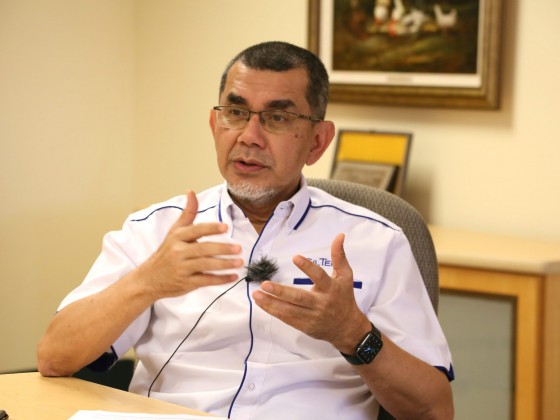All these points to the fact that the intensification of Science & Technology (S&T) activities is required to drive industry forward. This is precisely what Science to Action (S2A) agenda is all about since it requires the whole nation to take up the challenge for all of us to work unanimously towards achieving our goals through exploitation of S&T
by | Rushdi Abdul Rahim | rushdi@might.org.my
Greetings Salutation,
Time really fles! We are now almost entering the second quarter of 2015 and works are already piling up. Function and conference rooms are fully booked for March onwards. We at myForesight® are working frantically towards achieving the deadlines and fulfiling KPIs.
Langkawi International Maritime & Aerospace Exhibition (LIMA) is here again and I can see our colleagues rushing and going through reports and logistic matters. Then it occurs to me that it has been almost 18 years ago, MIGHT launched the fist National Aerospace Industry Blueprint. MIGHT, as a consensus building organization can proudly state that 80% of the recommendations from the blueprint has been implemented and undertaken. This was achieved through collaborations and partnership with various ministries, government agencies, institutions of higher learning, academicians as well as the private sector; all sharing the vision and mission in trying to drive the industry forward. The industry since has evolved tremendously by leaps and bounds and through advancements of technology, opportunities are aplenty. It is projected that the industry will generate future revenue of more than RM35 billion, this will defiitely give birth to more employment opportunities. We are looking at more than 32,000 skilled workforces. Nonetheless, let’s not forget that there are still more room for improvement and it is timely for us to revisit and update the direction of the industry if we wish to remain as an integral part of the aerospace industry ecosystem. These may include many more hard works which includes acquisition of advanced technology as well as conducting industry-led research.
Interview with Datuk Ir. Kamarulzaman Zainal on his take of the sector as well as more viewpoints from multiple stakeholders and players of the aerospace industry provides us with the current and future scenarios of this sector.
As for the maritime industries, the ship building ship repair (SBSR) industry aims to generate approximately RM6.35 billion in the Gross National Income (GNI) and provide 55,000 jobs. In 2013 the industry recorded revenue of RM8.36 billion with employability of 35,000 and it has been growing ever since. It’s is a known fact that the marine industry is the backbone of the Oil & Gas sector as it contributes greatly on the transportation, exploration and production activities. We can expect more growth from this sector with further development from the O&G sector. We foresee that Malaysia has the potential to emerge as the hub for building and repairing high value-added vessels and assets such as drilling ships, flating production storage and offlading (FPSO), flating liquefid natural gas (FLNG), jack-up rigs, mobile offshore production unit (MOPU) and LNGpowered vessels. This could be done through the enhancement and advancement of local design and implementation of new technologies.
All this points to the fact that the intensifiation of Science & Technology (S&T) activities is required to drive industry forward. This is precisely what Science to Action (S2A) agenda is all about since it requires the whole nation to take up the challenge for all of us to work unanimously towards achieving our goals through exploitation of S&T.
The Trent 900 Offset Programme is one of the successful efforts in harmonizing the S&T and industry development. It is the fist of its kind commercial offset program which was triggered from an engine procurement program from RollsRoyce to be fited on the new Airbus A380 aircraft used by Malaysian Airlines (MAS).

I end this issue with best wishes to all our readers out there and hope that you’ll enjoy the new look we presented. As always, we welcome any inputs, opinions and article contribution. Thank you.










